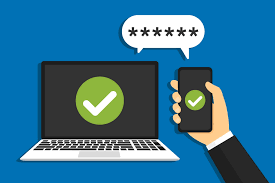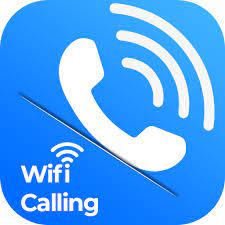When moving from the United States to Portugal or any other foreign country, there’s so many things to think about, including setting up phone service. If you’re like the average family in the US, you have some kind of cellphone plan. Whether or not you keep that plan when you come to Portugal is something that you must think about.
Why Keep your US Phone Number?
For us, the main motivator was to keep our phone numbers for our family members. We’d had our phone numbers for over 10 years. And are those phone numbers were also set up with all of the businesses and services in the States and we wanted to keep it that way. We also needed ways to receive two-factor authentication texts and calls when accessing financial websites.

Two-factor authentication is usually sent through some kind of code. Banks love to send you a code to ensure that it’s really you when you’re signing into your own account. That’s the primary reason why you would want to keep it and is something to consider well ahead of the time that you leave.
Depending on how long you have been with your current carrier, they may or may not allow you to have international service. When you bought your phone, was it was locked to your carrier? That’s something to consider and inquire with your provider if unknown, well in advance of your departure.
How to Keep Your US Phone Number
What you want to do is to be able to have an unlocked phone so that when you come to Europe, you are able to start up access with a local service provider. It is incredibly cheaper to have phone service in Portugal than it is in the States for the most part. In our case, we were with T-Mobile for many years before we decided that we were heading in this direction. When we were preparing for our move, we did some research and found there are many, many choices of secondary carriers that are either pre- or post-paid.
We found Ting which worked in our area of the Pacific Northwest and is a secondary carrier that uses T-Mobile’s line. Ting plans are comparatively, relatively inexpensive. So for the most part, our service didn’t change very much and we set up with their most inexpensive plan. Our plan is $10 per line for voice and we share a $5 a month plan on data. Another reason why we chose Ting is that they have a presence in Portugal and their rates are published in their help documents as to how much it would cost us to use the Ting line for voice or data in other countries. Rates were very reasonable in many, many countries.

Another Ting benefit over other carriers was that it allowed us to have WiFi calling. This means that as long as we have WiFi access, using our Ting numbers is no problem. So, incoming calls can just be received over WiFi and we wouldn’t necessarily be using cell service or roaming on whatever network we are on.
Alternative Phone Service Solutions
Of course, there’s other things that you can do if you don’t want to keep your current phone service. There are other services that allow you to park your number. Many expats have glowing things to say about Google Voice and setting up your phone number.
Now, this is very important. If you’re going to go the Google Voice route. You must set this up before you leave the States. You cannot set it up when you’re over here in Portugal, it must be done beforehand. Some people have trouble getting the two-factor authentication codes to come through correctly. But other people will get them just fine. There are other services that you can pay for but Google Voice is free and a lot of people love free but there’s a reason why freemium models are free.
There are other services like Number Barn or other places that allow you to park your number. With these you can still access your SMS, as well as two factor authentication through their app or their website.
Temporary Wifi Solution in Portugal
PortugalInternet.com is a service that we found before we left the states and what it allowed us to do was to fill the gap between when we left and when we had everything setup with phone and internet service.
We knew that we were probably going to bundle our cell phone services with our internet company and since we didn’t yet have a permanent place to stay, we couldn’t immediately set up our internet and phone service. That’s where PortugalInternet.com comes in. They allowed us to easily fill that gap because we basically rented a portable WiFi device for about a month so that we could have internet wherever we were, whether in our Airbnb or walking around Lisbon.
While we were out and about taking care of business, we could pretend like we had a real cell service. We could look things up using the mobile wifi device on-the-go. That made it super easy to find directions, look up information, and communicate with folks both in Portugal and the US. While it was more expensive than just getting your SIM card already, it bought us a little time and breathing room to make informed decisions and be more thoughtful in our approach. It is not the cheapest option, but it is cheaper than using the internet back in the states, wifi speeds were fast (100+mbps down) plus service was reliable.
Portugal Internet Process
We ordered the mobile internet device before we left the states and they had it waiting for us at the airport. As soon as the plane landed, we found the CTT post office (like USPS) in the airport just after you leave the arrivals area. It’s right in the main terminal area, you can just walk over to the CTT, the person who reserved the device should present photo identification, and they will have it ready for you or you can arrange to have it delivered to your hotel or any random CTT in the country.
This made it super convenient so that as soon as we arrived we just turned it on, it was charged up, and it just worked. Right away we had internet. And it was one less thing to worry about. If you need to extend your length of rental with them, you can take care of that via email. To return the device, you just drop it in a CTT mailbox with the pre-paid envelope they provide and when they receive it, they email you to let you know. Because we turned ours in a few days early, we even received an unexpected partial refund for unused service days.
Establishing Cell Phone Service
With our stopgap measure in place, we were free to take a few weeks to find the best long-term provider for bundled internet and cell phone service. To do so, we went to the local Loja de Cidadão in our neighborhood which is a place where you can get all of your needs taken care of like utility setup, social security registration, driver’s license processing, etc.
We’d selected the service provider NOS because they were running a special that gave you a free television with contract but they had never serviced our address and we’d have to use a satellite connection which would be unacceptably slow. Instead, we went with MEO who had previously serviced the home.
Our bundled package included fiber internet, two cell phones, cable TV, and a landline phone (if we ever wanted one of those again). Best of all, we paid less for the bundle than we had for just internet alone in the States. We had purposely purchased phones before leaving with dual-sim, a physical one with Ting and an e-sim with our new provider. We were able to get that initiated on the spot at the counter and we were up and running with our new cell service in about 15 minutes.
Avoiding Phone Service Roaming Charges
We both have iPhones. To avoid any accidental roaming charges from Ting for use when not on Wifi, we turn off Ting while we’re out and about and then turn it back on when we get home. That makes it much easier just to use our MEO e-sim while on-th-go. If we forget to turn it off and accidentally use it, the roaming fees are pretty nominal, like 25 cents or so. That method has really helped us and is just something to keep in mind. With our iPhones, we can set every contact to use a certain line. All of our contacts back in the States use Ting, our stateside carrier, and all of our new contacts in Portugal use our Portugal e-sim and carrier.
In conclusion, it’s not terribly difficult to set up a new service here in Portugal. People approach the problem of cell service continuation in different ways. This is just the way that we did it and it has worked out really well for us. We hope it does for you too. To learn more about how we actually setup the service, check out our blog here.







